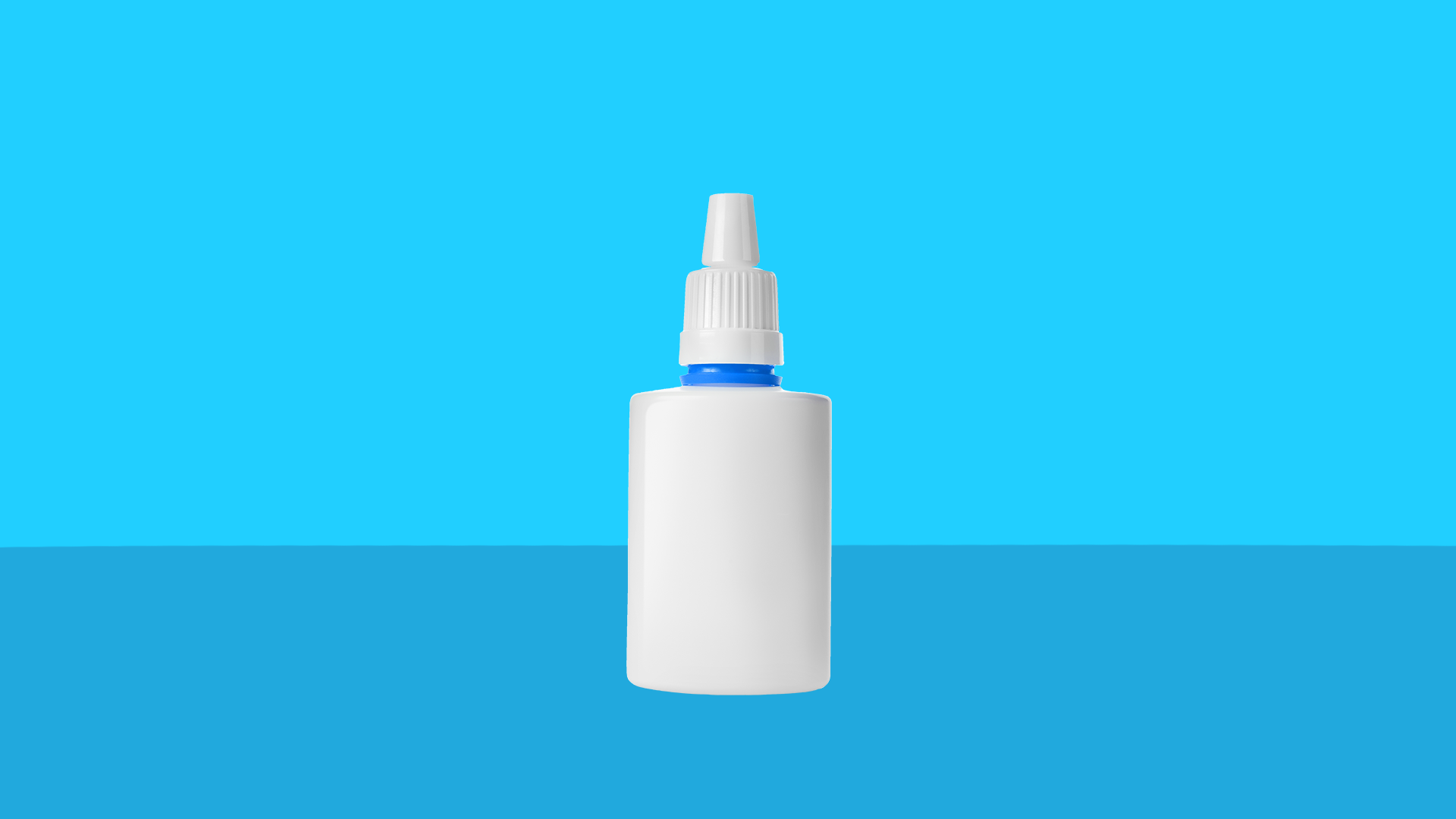Compare Xiidra alternatives | Cequa | Lacrisert | Restasis | Eysuvis | Tyrvaya | Natural alternatives | How to switch meds
Xiidra is the brand name of an ophthalmic anti-inflammatory agent approved by the United States Food and Drug Administration (FDA) to manage dry eye disease. It is produced by Novartis pharmaceuticals and has the generic name lifitegrast ophthalmic solution. It is with the drug class of fairly new lymphocyte function-associated antigen 1 (LFA-1) antagonists, and its exact mechanism of working is unknown. The medication is successful in combating dry eyes as it inhibits certain proteins (LFA-1 from interacting with ICAM-1) that cause the body to not make enough tears, produce poor quality tears, or to keep eyes moist. Chronic dry eye disease may cause blurred vision and is typically seen more in adults, women, people with certain medical conditions, and from the use of certain medications.
Although quite effective against dry eye syndrome, there are some potential side effects of Xiidra usage. Some unwanted symptoms may include eye irritation, dysgeusia (unusual taste sensation), blurred vision, headache, redness, eye irritation, eye discharge, and itching sensations in the eye. More serious adverse reactions associated with the use of Xiidra include anaphylaxis, angioedema, and severe allergic reactions.
RELATED: Eye health 101: How to protect vision and keep your eyes healthy
What can I take in place of Xiidra?
Many clinical studies attest to the improvement of symptoms of dry eye disease with the use of Xiidra; however many times an alternative may still be needed. Side effects from the medication, ineffectiveness, costs, and even lack of availability may all be reasons that an alternative may be sought out in place of Xiidra. An ophthalmology healthcare provider will be able to help find alternatives to prescribing Xiidra if needed.
Compare Xiidra alternatives |
|||
|---|---|---|---|
| Drug name | Uses | Dosage | Coupons |
| Xiidra (lifitegrast ophthalmic) | Dry eye disease | 0.05% solution: 1 drop in eye every 12 hours | Xiidra coupons |
| Cequa (cyclosporine ophthalmic) | Ocular dryness, inflammation associated | 0.09% Solution: 1 drop in affected eye every 12 hours | Cequa coupons |
| Eysuvis (loteprednol ophthalmic) | Short term treatment for dry eye disease | 0.25% Suspension: 1-2 drops in eye 4 times a day for up to 2 weeks | Eysuvis coupons |
| Lacrisert (hydroxypropyl cellulose ophthalmic) | Moderate to severe ocular dryness, exposure keratitis, decreased corneal sensitivity, recurrent corneal erosions | 5 mg insert: Apply insert to eye daily | Lacrisert coupons |
| Restasis (cyclosporine ophthalmic) | Ocular dryness, inflammation associated | 0.05% solution: 1 drop to eye every 12 hours | Restasis coupons |
| Retaine HPMC (hypromellose ophthalmic) | Ocular dryness | 3% solution: 1-2 drops to eye as needed | Retaine HPMC coupons |
| Retaine MGD (mineral oil ophthalmic) | Moderate to severe ocular dryness | 30 ophthalmic emulsion plastic container | Retaine MGD coupons |
| Retaine PM (mineral oil/ white petrolatum ophthalmic) | Ocular dryness | 5 gram tube: apply 0.25 inch ribbon to conjunctival sac(s) as needed | Retaine PM coupons |
| Tyrvaya (varenicline nasal) | Dry eye disease | 0.03 mg/actuation of spray: 1 spray per nostril every 12 hours | Tyrvaya coupons |
Other alternatives to Xiidra
- Bausch & Lomb Advanced Eye Relief Dry Eye (glycerin/ propylene glycol ophthalmic)
- Bausch & Lomb Advanced Eye Relief Maximum Redness (naphazoline/ hypromellose ophthalmic)
- Bausch & Lomb Advanced Eye Relief Redness (naphazoline/ polyethylene glycol 300 ophthalmic)
- Bion Tears (dextran 70/ hypromellose ophthalmic)
- Blink Gel Tears (polyethylene glycol 400 ophthalmic)
- Blink Tears (polyethylene glycol 400 ophthalmic)
- Clear Eyes Advanced Dry & Itchy Relief (glycerin ophthalmic)
- Clear Eyes Complete 7 Symptoms Relief (naphazoline/ zinc sulfate/ hypromellose/ polysorbate 80 ophthalmic)
- Clear Eyes Cooling Comfort Redness Relief (naphazoline/ glycerin ophthalmic)
- Clear Eyes Maximum Itchy Eye Relief (naphazoline/ zinc sulfate/ glycerin ophthalmic)
- Clear Eyes Maximum Redness Relief (naphazoline/ glycerin ophthalmic)
- Clear Eyes Natural Tears (polyvinyl alcohol/ povidone ophthalmic)
- Clear Eyes Redness Relief (naphazoline/ glycerin ophthalmic)
- Clear Eyes Traveler’s Eye Relief (tetrahydrozoline/ polyvinyl alcohol/ povidone ophthalmic)
- Clear Eyes Triple Action Relief (tetrahydrozoline/ polyvinyl alcohol/ povidone ophthalmic)
- GenTeal Tears Mild (dextran 70/ hypromellose ophthalmic)
- GenTeal Tears Moderate (dextran 70/glycerin/ hypromellose ophthalmic)
- GenTeal Tears Moderate Preservative Free (dextran 70/ hypromellose ophthalmic)
- GenTeal Tears Severe Gel (hypromellose ophthalmic)
- GenTeal Tears Severe Night-Time Ointment (mineral oil/ white petrolatum ophthalmic)
- Murine Plus for Dry Eyes Redness Relief (tetrahydrozoline/ polyvinyl alcohol/ povidone ophthalmic)
- Murine Tears for Dry Eyes Original (polyvinyl alcohol/ povidone ophthalmic)
- Refresh Celluvisc (carboxymethylcellulose ophthalmic)
- Refresh Classic (polyvinyl alcohol/ povidone ophthalmic)
- Refresh Digital (carboxymethylcellulose/ glycerin/ polysorbate 80 ophthalmic)
- Refresh Lacri-Lube (mineral oil/ white petrolatum ophthalmic)
- Refresh Liquigel (carboxymethylcellulose ophthalmic)
- Refresh Optive (carboxymethylcellulose/ glycerin ophthalmic)
- Refresh Optive Advanced (carboxymethylcellulose/ glycerin/ polysorbate 80 ophthalmic)
- Refresh Optive Gel Drops (carboxymethylcellulose/ glycerin ophthalmic)
- Refresh Optive Mega 3 (carboxymethylcellulose/ glycerin/ polysorbate 80 ophthalmic)
- Refresh PM (mineral oil/ white petrolatum ophthalmic)
- Refresh Plus (carboxymethylcellulose ophthalmic)
- Refresh Relieva (carboxymethylcellulose/ glycerin ophthalmic)
- Refresh Tears (carboxymethylcellulose ophthalmic)
- Soothe Hydration (povidone ophthalmic)
- Soothe Maximum Hydration (povidone ophthalmic)
- Soothe Night Time Lubricant (mineral oil/ white petrolatum ophthalmic)
- Soothe Preservative Free Lubricant (glycerin/ propylene glycol ophthalmic)
- Soothe XP (mineral oil ophthalmic)
- Systane (polyethylene glycol 400/ propylene glycol ophthalmic)
- Systane Balance (propylene glycol ophthalmic)
- Systane Complete (propylene glycol ophthalmic)
- Systane Gel Drops (polyethylene glycol 400/ propylene glycol ophthalmic)
- Systane Night Gel (hypromellose ophthalmic)
- Systane Nighttime (mineral oil/ white petrolatum ophthalmic)
- Systane Ultra (polyethylene glycol 400/ propylene glycol ophthalmic)
- TheraTears Liquid Gel (carboxymethylcellulose ophthalmic)
- TheraTears Lubricant Eye Drops (carboxymethylcellulose ophthalmic)
- Visine A.C. Itchy Eye Relief (tetrahydrozoline/ zinc sulfate ophthalmic)
- Visine Dry Eye Relief (polyethylene glycol 400 ophthalmic)
- Visine Dry Eye Relief All Day Comfort (polyethylene glycol 400 ophthalmic)
- Visine Dry Eye Relief Tired Eye (polyethylene glycol 400 ophthalmic)
- Visine Red Eye Hydrating Comfort (tetrahydrozoline/ polyethylene glycol 400 ophthalmic)
- Visine Red Eye Total Comfort Multi-Symptom (tetrahydrozoline/ polyethylene glycol 400 ophthalmic)
Top 5 Xiidra alternatives
The following are some of the most common alternatives to Xiidra.
1. Cequa
Cequa is an ophthalmic inflammatory agent used for the management of chronic dry eye due to inflammation. Cequa is the brand name of the medication and cyclosporine ophthalmic is the generic name. Cequa increases tear production by acting as an immunosuppressant. It is found as single-use vials and the dosage is 0.09% solution. Some common reactions associated with its use include instillation site pain, conjunctival hyperemia, blepharitis, ocular irritation, and headache.
2. Lacrisert
Lacrisert is an ophthalmic insert produced by Bausch and Lomb for the treatment of moderate to severe dry eye disease. It is inserted into the eye and can provide 24 hours of lubrication for most people. The generic name is hydroxypropyl cellulose ophthalmic. Lacrisert can also be used for exposure to keratitis, decreased corneal sensitivity, and recurrent corneal erosions. The dosage is a 5 mg insert to the affected eye daily. Side effects seen with use of Lacrisert include temporary blurred vision, eye discomfort, irritation or redness, matting or sticky eyelashes, eye sensitivity to light, as well as an allergic reaction and swelling of the eyelid.
3. Restasis
Restasis is an ophthalmic emulsion used for chronic dry eye disease. Its drug class is a calcineurin inhibitor immunosuppressant that helps with tear production and reduces inflammation on the ocular surface. FDA approval has just been granted for the generic version, cyclosporine ophthalmic emulsion, in the United States. Restasis is found as a 0.05% eye emulsion that is applied to the affected eye every 12 hours. The most common side effect is a temporary burning sensation, but other side effects may include eye redness, discharge, watery eyes, eye pain, foreign body sensation, itching, stinging, and blurred vision.
4. Eysuvis
Eysuvis is an ophthalmic solution produced by Kala pharmaceuticals and used for the short-term treatment of dry eye syndrome. Other brand-name prescription drugs include Alrex, Inveltys, Lotemax, and Lotemax SM. It is an ophthalmic steroid medication used to help with inflammation from various conditions such as allergies, viruses, and iritis. The generic name of the medication is loteprednol ophthalmic. It is also helpful against post-surgical eye pain and swelling. Eysuvis dosage includes an ophthalmic suspension containing 2.5 mg/mL of loteprednol etabonate. 1-2 drops is instilled in the affected eye up to four times a day for a maximum of two weeks. Contact lenses must be removed prior to application and then can be reapplied 15 minutes after application of the medication. The most common adverse reaction from use of Eysuvis is instillation site pain.
5. Tyrvaya
Tyrvaya is an FDA-approved nasal spray for the treatment of chronic dry eye. The generic name is varenicline nasal. Tyrvaya is a highly selective cholinergic agonist that activates the trigeminal parasympathetic pathway that is accessible within the nose. This results in increased natural tear production. Clinical trials were conducted for Tyrvaya for those with mild, moderate, and severe dry eye disease. Artificial tears were also used during the trials. There was significant improvement in dry eye symptoms with its use. It delivers 0.03 mg (0.05 ml) of varenicline in each spray every 12 hours. Common side effects seen with Tyrvaya usage include sneezing, cough, and throat and nose irritation.
Natural alternatives to Xiidra
Although prescription medications are quite effective in treating dry eye symptoms, sometimes a more natural approach may be preferred. Simple modifications to your daily lifestyle may help combat dry eye. Some examples may include protecting your eyes from environmental irritants (sun, wind, debris), eating a well-balanced diet including Omega 3 fatty acids (chia seeds, walnuts, fish), staying hydrated, avoiding alcohol and smoking, taking breaks from computers and phone screens, and good eyelid hygiene. Vitamin supplements have also been linked to improved ocular health. Examples include Vitamin A, Vitamin E, Vitamin C, Vitamins B6 and B9, Riboflavin, Niacin, Lutein and Zeaxanthin, and Thiamine. Over-the-counter artificial tears or lubricating drops may also provide relief of symptoms.
How to switch to a Xiidra alternative
When considering discontinuing medications for an alternative, it is always wise to discuss other treatment options with your healthcare provider first. They can provide proper medical advice on the best steps to reduce the use of the medication and begin a new treatment. If an alternative is needed for Xiidra, it can be started right away with no need of tapering Xiidra. When deciding what medication will best support your eye health, SingleCare has several discounts available regardless of what medication you decide to use. Always check our discount card program to ensure you are getting the best prices available for your prescription needs.











